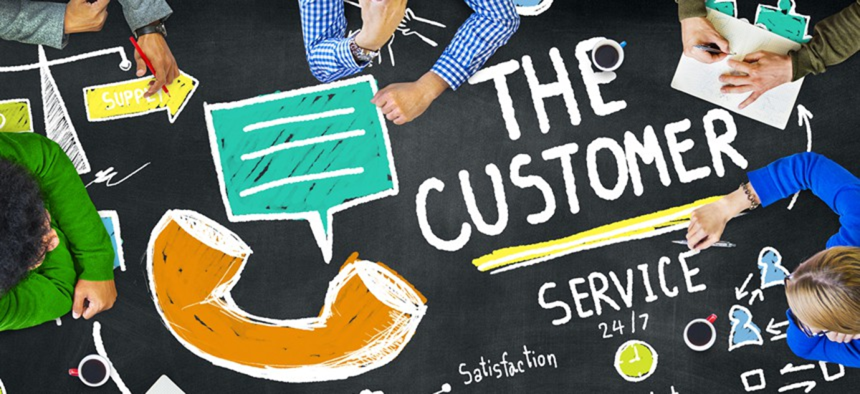sponsor content What's this?
Lead With Empathy to Power the Best Customer Experiences

Presented by
Genesys

My first week out of college, I was hired to code an integration between Remedy CRM and Genesys for a softphone and a screen pop in a wealth management contact center. I had no idea what any of that meant. Then my boss told me this specific integration hadn’t been done before; he wasn’t even sure if it was possible.
Fueled by grit and gumption, I threw myself into documentation, diagramming event flows, dissecting log files and dabbling with the DNA of telephone calls. I was mesmerized by a whole new world of data, formed into endless lists of key-value pairs. I needed to find a way to automatically deliver that data as soon as the phone rang, empowering contact center agents to be seemingly psychic with all the right caller info at the first “Hello.”
The whole concept felt mysterious until I dialed the test number, and the APIs worked their magic. In coding my first screen pop, I felt like I had decoded the Holy Grail of customer service: knowing your customer.
Times Have Changed — Except When They Haven’t
That was 22 years ago, and we’ve come a long way since then. In the 2000s, contact centers also moved offshore and back again; CRM systems became a must-have for most companies. The 2010s introduced the rise of mobile, social and digital channels galore. And then in 2020, mass adoption of artificial intelligence (AI), automation, big data analytics and cloud transformation — as a result of the pandemic — became the one curve that didn’t need to be flattened.
If there’s an industry where the use of advanced technology has grown exponentially, it’s customer experience.
The book “Empathy in Action™ – How to Deliver Great Customer Experiences at Scale” shines a light on a key blind spot for businesses: While the evolution of technology has created tremendous opportunities, we’ve also observed that the criteria for business success haven’t evolved at the same rate for considering employee and customer experiences. This is also a theme in the fireside chat with author and Genesys CEO, Tony Bates, and IDC Program Vice President of Customer Experience Research, Alan Webber.
Think about it: A company’s income statements and balance sheets don’t shed a light on the tangible value of its customers or employees. They count revenue but don’t capture the direct relationship between customer and employee experiences.
“The most important thing that a business can do is make sure that their employees feel heard, understood and safe in a trusted environment, with the exact same thing for the customers they serve.” said Bates.
At an operational level, many habits in contact centers today were developed in the 60s — rooted in cost-cutting and business-centric measures of efficiency and effectiveness, such as speed of answer, handle times, and occupancy and containment rates. Even the 80/20 SLA is rumored to be an arbitrary industry standard that was hard-wired in original ACD systems decades ago, arguably with false validity from the Pareto principle.
The world has seen huge technological advancements, yet priorities on how we deliver and measure customer and employee experiences continue to lag.
In a world of automation, it’s hardly human.
Watch for Warning Signs
As Jon Arnold, Principal Analyst of J. Arnold & Associates noted, history really can repeat itself, especially when we don’t learn from our mistakes. And there are always warning signs.
“When the needs of customers – as well as employees – are secondary, the warning signs will be missed almost every time,” said Arnold.
All the best technology in the world won’t make a difference if you don’t have a people-centric culture, and if your core values aren’t built around empathy — put yourself in your customers’ shoes. And empathy isn’t sympathy; businesses need to take an actionable, measurable approach to put customers and employees — not profits — first.
For big changes in the customer experience (CX) game, companies need not only new technologies but also a new leadership mindset and an economic model, summarized Rebecca Wetteman, Principal at Valoir, in her recent blog about Empathy in Action. Businesses that have their values, decisions, investments and performance metrics rooted in empathy for their employees and customers can catch the warning signs early enough to adapt effectively to disruption.
Empathy becomes a force multiplier to efficiency and effectiveness in the formula for great customer experience.
History Foreshadows Our Future
As time passes and tech evolves, I can appreciate how history has foreshadowed the future of CX. Decades later, there’s still a golden thread among those who get it right. The Holy Grail in customer service is still about knowing your customer; data is still our currency for customer service. With new levels of granularity, data provides context over time that helps us create empathetic experiences at scale in a people-centric culture. We can listen to our customers and employees, understand them, and act and learn with sophisticated machine learning designed for prediction and personalization.
In the future, personalization will ironically mean more automation, but with the deeper connections, we all crave as humans. Research shows tremendous business value in customer loyalty. But it isn’t merely about business value. Empathy is a human value.
And human values power the best experiences.
This content is made possible by our sponsor Genesys; it is not written by and does not necessarily reflect the views of Nextgov's editorial staff.
NEXT STORY: Why Government Leaders Are Turning to AI





